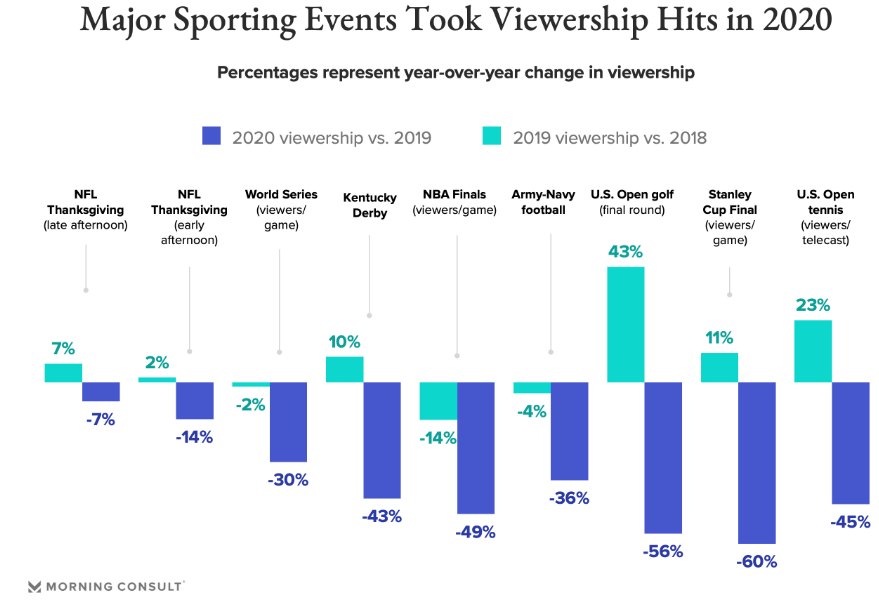As disruptive as the pandemic has been for live sports, the possibility of ending the health crisis with vaccines has lifted hopes that 2021 will help to fill stadium seats and restore a less crowded calendar of televised sports. Higher fan attendance helps to support engagement with players and teams, while traditional schedules spread spots programming more evenly throughout the year.
“The pandemic created obviously a challenge because it shut down all content production. That included live sports,” Gibbs Haljun, total investment lead of GroupM’s Mindshare, said in this interview with Beet.TV. “With no sports, there was pent-up demand for it when it actually came back.”
The total cumulative audience of televised was higher than in the past, but sports leagues had to compete more directly for viewers. The National Basketball Association, Major League Baseball, National Hockey League and NASCAR were among the sports organizations to resume operations. Their efforts to complete their seasons later in the fall made them more competitive with the National Football League and college football.
Source: Morning Consult, Sports Media Watch
“You had some fatigue from fans when you had all sports on, all the time,” Haljun said. “There are only so many hours in the day that people can consume sports content, and continue to be interested.”
The constraints pushed marketers to be more creative in optimizing their media plans.
“When you look at integrated partnerships, the biggest challenge is time. The pandemic created the opportunity to pivot and compress the timeline,” Haljun said. “It’s not about saying, ‘no.’ It’s about saying, ‘yes, and…’ The reality is not every network, every client will be a great fit, but there are so many that are, that there’s always a solution.”
Looking for One-to-One at Scale
Reaching mass audiences amid a more fragmented media landscape is challenging, but there is a possibility for more focused targeting as people consumer media on a wider variety of devices, including smartphones and connected TVs.
“The multiscreen opportunity is great. It allows us to be more precise…and do things that sports hasn’t been able to do in the past couple of years,” Haljun said. “The challenge for all of us is to get something at scale.”
Addressable advertising, which lets marketers reach different households with different ads during the same show on linear TV, is still in the nascent stage for national broadcasters.
“I certainly don’t see a national addressable platform at the moment on Sunday Night NFL. It doesn’t mean it won’t come down in the future, but it’s not something that’s fully actionable at this point,” Haljun said. “We need to build an interface and a tool that allows us to really split delivery.”
Another key challenge for sports is its aging demographic, as younger viewers show less willingness to spend several hours watching a game.
“We need to figure out how to adapt different platforms that they’re utilizing, whether it’s TikTok or Snapchat, or even Twitter, for that matter,” Haljun said. “Youth want to interact with their friends at the same time that they’re viewing. The pandemic has created some challenges with that as well.”
You are watching “Live Sports 2021: What’s Next on TV,” a Beet.TV + VAB leadership video series presented by Effectv, a Comcast company. For more videos, please visit this page.










































